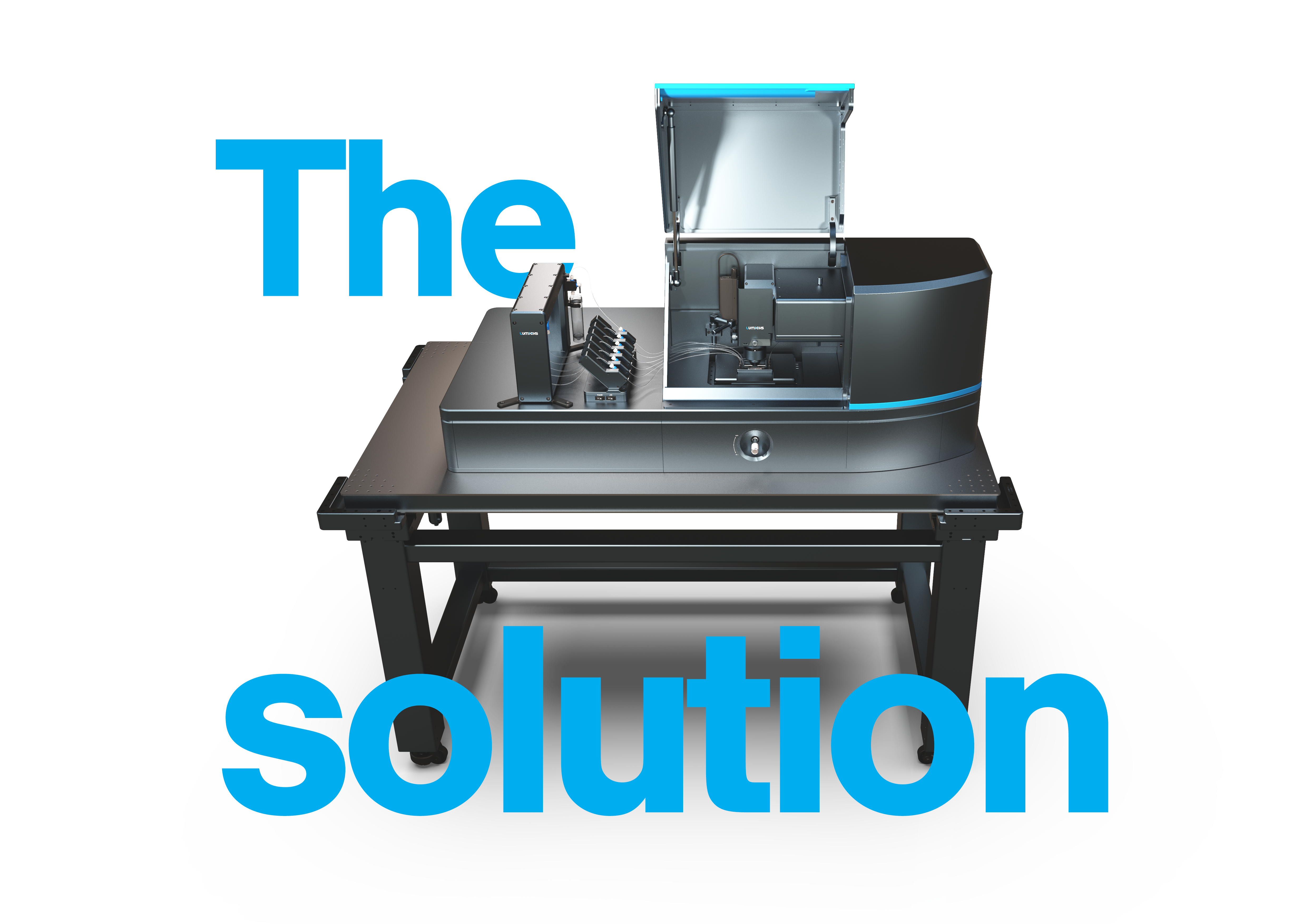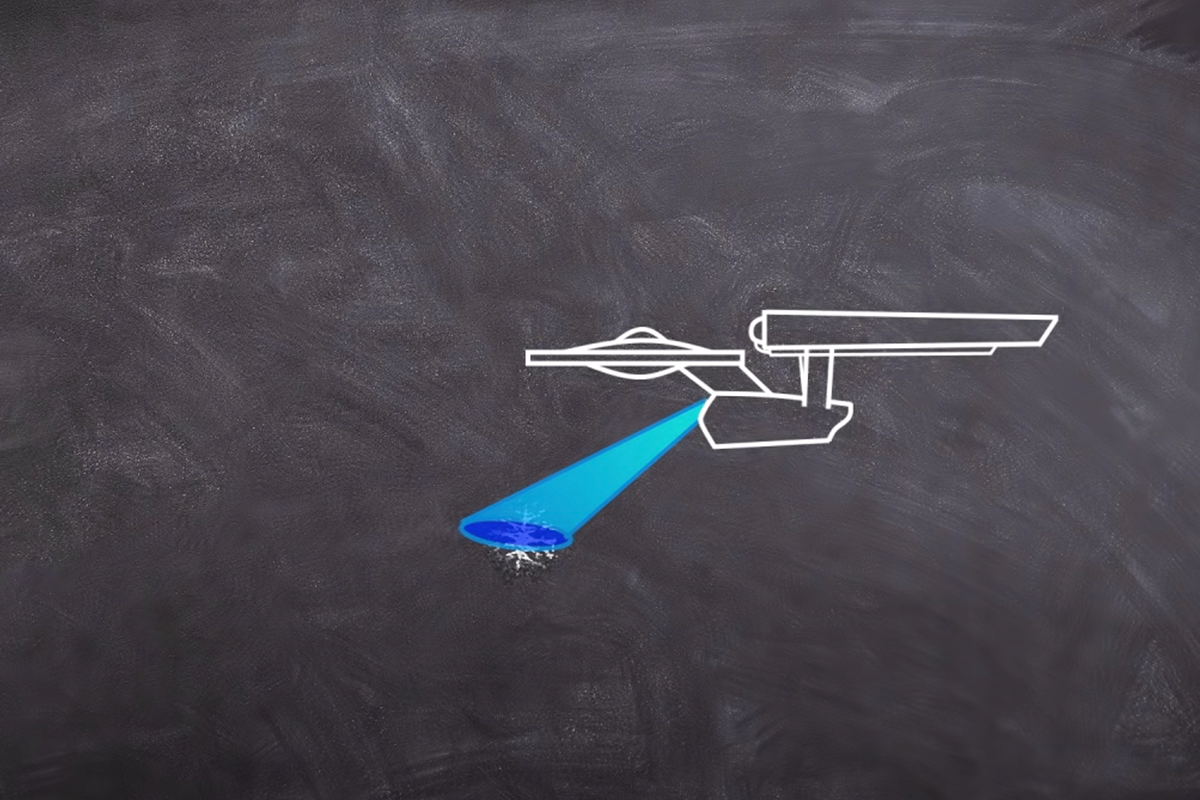
What are optical tweezers and what can they do?
In 2018 Arthur Ashkin won the Nobel Prize in Physics “for the optical tweezers and their application to biological systems”. In essence, he discovered that light’s momentum could serve as an incredibly sensitive set of tweezers to catch and study biomolecules.


By shooting a laser through a microscope, he created a highly focused light beam, strong enough to trap and “trap” small objects, such as plastic beads. These beads can be coated to stick to various biomolecules, such as DNA, RNA, proteins, or filaments. Two trapped beads can be used as hooks to hold a single molecule on its respective ends. We can then control the lasers and move the beads with the tethered biomolecule and, for instance, stretch it. The ability to manipulate molecules in this way allows us to measure forces (for example, upon stretching) and monitor the beads’ positions. These outcomes can then serve us to calculate the tethered molecule (for example, its elasticity) and study structural transitions.

Discovery of optical tweezers
First introduced in 1986 at Bell labs, optical tweezers quickly emerged as an indispensable tool that can be used for a variety of different applications in chemistry and biology1.
Not long after this initial breakthrough, optical tweezers, or optical traps as they are otherwise known, were successfully used to physically trap and control viruses, bacteria and single-cells, paving the way for the mechanical and kinetic study of biomolecules at the single-molecule level2-3.
Presently, optical tweezers have been used in a variety of different applications, such as in the study of the interactions between proteins and DNA involved in DNA organization, replication, transcription and repair; the study of the energy landscape of proteins and the kinetics of molecular motors4-7.
Simply put, the value of optical tweezers lies in the fact that they can be used to perform experiments to probe the properties of single-molecules by applying forces in the range of picoNewtons and by measuring distance displacements in the range of nanometers.
Working principle of optical tweezers
Optical tweezers are based on the principle of light carrying momentum proportional to its energy and propagation direction.
When a laser beam passes through an object, it bends and changes direction (called refraction) and alters its momentum. According to Newton’s third law, the object undergoes an equal and opposite momentum change, a reaction force, for the system to conserve the total momentum.
Figur 1 illustrates the transfer of light momentum occurring when a light beam travels through a bead. In a typical optical tweezers configuration, the incoming light originates from a focused laser beam through a microscope objective and focuses on a spot in the sample. The spot subsequently creates a trap able to hold a small object in place.

Figure 1: Re-direction of a light path and change of momentum as it passes through a microsphere or “bead” with high index of refraction related to the medium (left). Momentum of equal and opposite force is transferred from the photons to the bead according to Newton’s Law of energy conservation (right).
Laser trapping of beads
In a typical optical tweezers configuration, the incoming light originates from a focused laser beam through a microscope objective and focuses on a spot in the sample. The spot creates a trap able to hold a small dielectric object at place.
The total forces experienced by the object, or bead in most experimental settings, consist of a scattering force and a gradient force8. The scattering force arises when a light beam is scattered by the surface of the object. This scattering produces a net momentum transfer from the light photons to the object and causes the bead to be pushed towards the beam propagation. The gradient force results from the intensity profile of the laser beam which acts as an attractive force, drawing the bead towards the region with greater light intensity. In the case of a focused laser beam with a Gaussian intensity profile (a normal distribution), the gradient force pulls the object into the center of the focal plane.
The reason the object stays in the center of the beam is because of the sum of the forces acting upon it. In the center, rays of light refract or scatter through the object the same way on both sides of the vertical plane, which cancels forces from moving the object sideways. If the object drifts to one side, it returns to the center. Think of a spring that accelerates back to the center when displaced from its equilibrium position. Figure 2 shows how the gradient force restores an off-centered bead towards the center of the focal plane, eff ectively trapping the object in all dimensions.

Figure 2: Two light paths passing through a dielectric micron sized bead. Due to the light gradient, the path originating from the center of the beam carries more photons than the light path commencing from the outlines of the beam, resulting to a larger force pulling the bead towards the focal point.
References
1. Ashkin et al. (1986) Observation of a Single-Beam Gradient Force Optical Trap for Dielectric Particles. Optic Letters
2. Ashkin et al (1987) Optical Trapping and Manipulation of Viruses and Bacteria. Science
3. Ashkin et al. (1987) Optical Trapping and Manipulation of Single Cells Using Infrared Laser Beams. Nature
4. Dame et al. (2006) Bacterial Chromatin Organization by H-NS protein Unravelled Using Dual DNA Manipulation. Nature
5. Heller et al. (2014) Optical Tweezers Analysis of DNA-Protein Complexes. Chemical Reviews
6. Cecconi et al. (2005) Direct Observation of the Three-State Folding of a Single Protein Molecule. Science
7. Nishizaka et al. (1995) Unbinding Force of a Single Motor Molecule of Muscle Measured Using Optical Tweezers. Nature
8. Neuman et al. (2004) Optical Trapping. Review of Scientific Instruments
Our solution
The C-Trap® Optical Tweezers – Fluorescence & Label-free Microscopy is the world’s first instrument that allows simultaneous manipulation and visualization of single-molecule interactions in real time. It combines high resolution optical tweezers, fluorescence and label-free microscopy and an advanced microfluidics system in a truly integrated and correlated solution.
The C-Trap offers you a fast workflow to seamlessly catch and manipulate single molecules. The instrument measures their structural changes or interactions while you visualize them in teal time with high spatial and temporal resolution, ultimately offering you a complete and detailed picture of biomolecular properties and interactions.
Curious to learn more?




